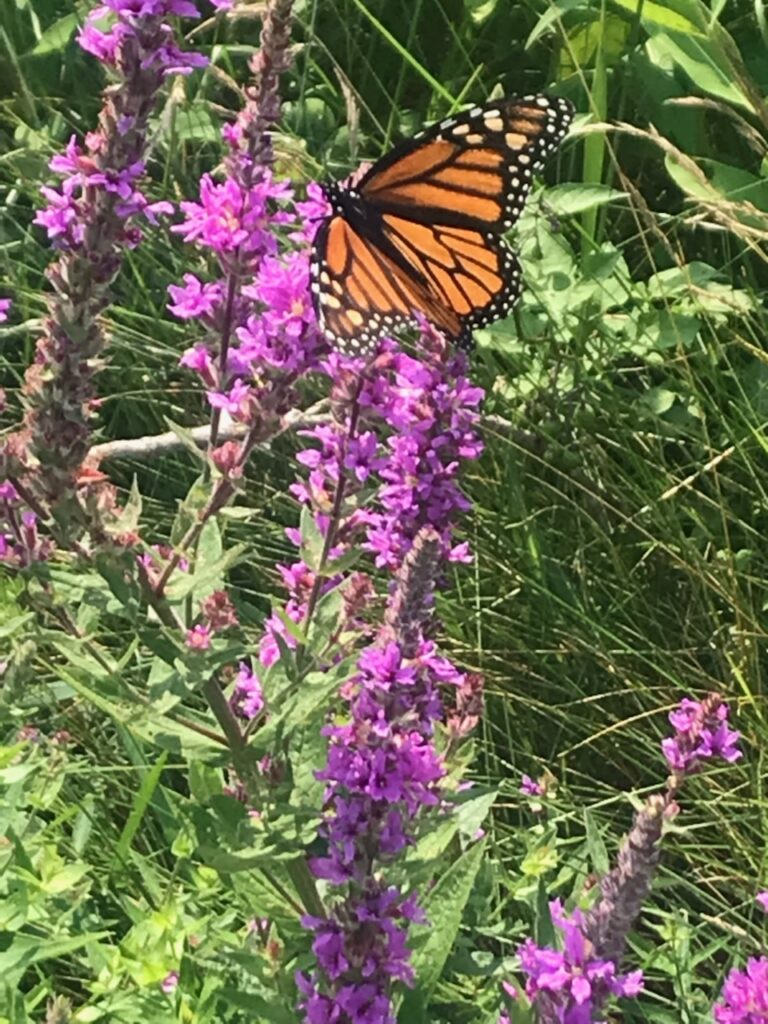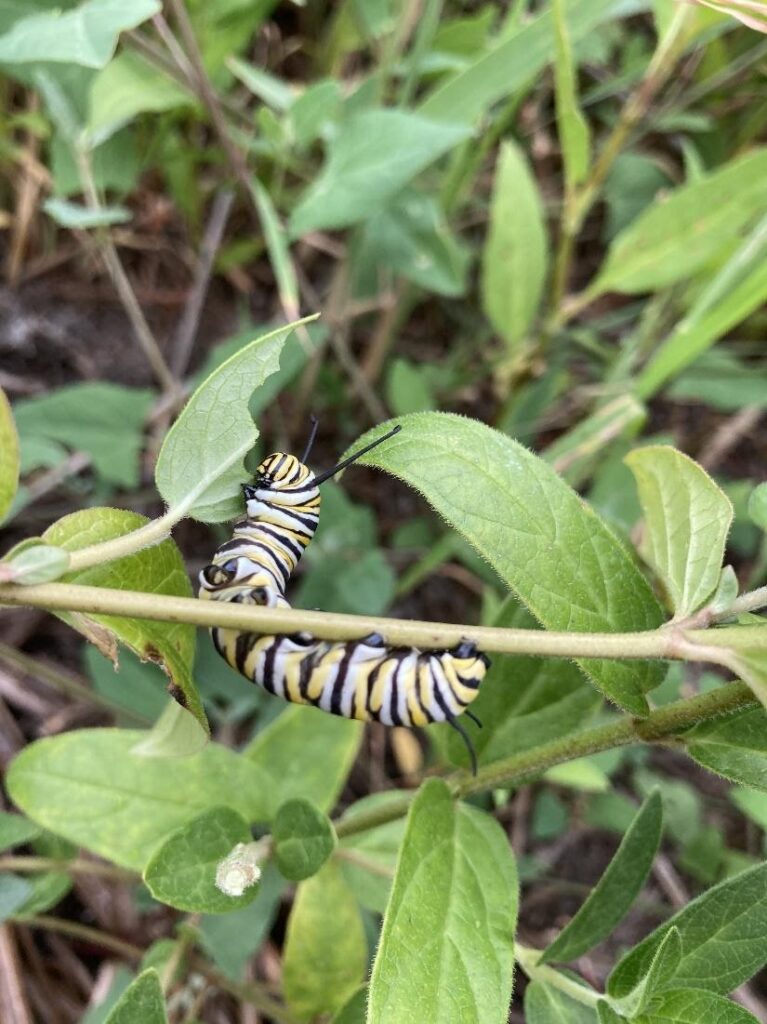Monarch Butterflies

The bright orange jewel tones flit and flutter from flower to flower in a constant search for food. The delicate, diaphanous wings carry this visitor on its route, flying along an instinctive path it has never before flown. Butterflies and moths abound during this time of year, but the “royal” butterfly that captivates many people is the Danaus plexippus, more commonly known as the monarch butterfly.
The monarch butterfly has a long documented annual migration across North America. It is seen in Massachusetts and along the Boston Harbor Islands from mid-summer through early fall. People can observe monarchs on a variety of plants found in fields, pastures, meadows, marshes and other open areas. Monarch butterflies rely on native wildflowers–including asters, goldenrods, and milkweeds–for nectar as they undertake their journey. They will use their proboscis to drink the nectar and also frequent plants that flower in home gardens like coneflowers, lavender, basil, and oregano.
The monarch’s migration is not simple, nor in only one direction. Adult butterflies spend their winters in select areas of Mexico and California as they cannot survive cold temperatures found in northern climates. As the migration starts, the initial adult butterfly lays eggs on its preferred plant host and then dies. The next generation picks up the journey and continues this process successively until they reach the summer breeding grounds. Once temperatures start to cool, the latest generation of butterflies makes a journey of more than 1,000 miles back to the their overwintering grounds where they have never traveled to beforehand. Unlike the successive generations of monarchs that made the northern migration, a single generation will complete this journey south. They are the only known butterfly to perform such a vast migration. Scientists are still trying to understand how the butterflies accomplish this amazing feat.
In addition to contributing to the beauty of the great outdoors and inspiring our curiosity, monarch butterflies provide significant ecological and economic benefits as a pollinator species. Pollinators are animals, including insects, birds and bats, that move reproductive material known as pollen from plant to plant. Without the pollination of plants, we would experience a marked decline in the diversity of plants in our backyards and produce in our supermarkets.
Monarchs, along with other pollinators that are found in Massachusetts and on the Boston Harbor Islands, are facing several challenges for their survival. According to MassWildlife, more than twenty species of butterflies and moths and 3 bees are listed as endangered, threatened, or of special concern. Loss of habitat is one challenge butterflies encounter. The constantly changing landscapes on the migration route impacts how much food is available for the return journey to Mexico. Invasive species are another problem. Black swallowwort is a highly invasive vine in the milkweed family that resembles milkweed. The milkweed plant is the only plant monarch caterpillars will eat. Due to its close resemblance to milkweed, adult monarchs will inadvertently lay eggs on the swallowwort. Unfortunately, when the caterpillars hatch, they cannot feed and will not survive.
The bright colors the monarch is known for has another, more primal, function: it deters predators from preying on it. This process is called aposematism. The milkweed the caterpillars eat contains poisonous chemicals, which are sequestered in the bodily tissues of the animal, even as an adult. Birds and other animals that attempt to eat the caterpillar or butterfly will most likely not try it again in the future. In the unique way the natural world works, the monarch has what appears like an almost identical butterfly counterpart called the viceroy. Why would two animals look so similar? For a long time, it was thought the viceroy mimicked monarchs to discourage predators because viceroys were harmless. Scientists have since discovered viceroys are also toxic. This makes it a case of Mullerian mimicry, when two toxic or dangerous organisms resemble each other to deter predators.
The Natural Resources team of the Boston Harbor Islands works throughout the season to remove invasive plant species, such as black swallowwort, and to plant native plant species. Many well-intentioned people purchase or gather monarch butterfly eggs or caterpillars with the goal of species conservation. Rearing monarchs in captivity can expose monarchs to life-threatening parasites and can even reduce their ability to successfully migrate. Monarchs purchased from breeders have been found to have smaller wings and a diminished migratory instinct. Local residents can help monarchs and other pollinators by planting native plants that encourage pollinators to visit. For more information on selecting pollinator-friendly plants for your garden, check out MassAudubon’s guide on planting native pollinator gardens: https://www.massaudubon.org/learn/nature-wildlife/help-pollinators-thrive/plant-a-pollinator-garden.

Photo credit: NPS. Monarch butterfly on Spectacle Island. Photo credit: Adinah Greene.
